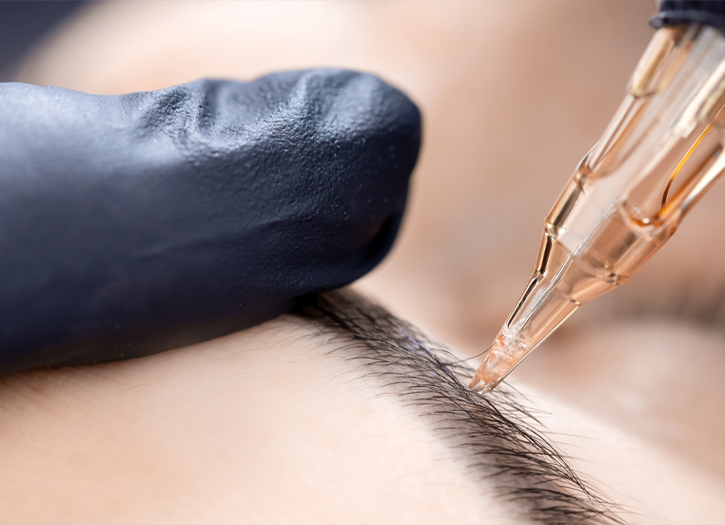A temporary tattoo is a non-permanent image on the skin resembling a permanent tattoo. As a form of body painting, temporary tattoos can be drawn, painted, airbrushed, or needled in the same way as permanent tattoos.
Decal (press-on) temporary tattoos are used to decorate any part of the body. They may last for a day or for more than a week.Foil temporary tattoos are a variation of decal-style temporary tattoos, printed using a foil stamping technique instead of using ink. The foil design is printed as a mirror image in order to be viewed in the right direction once it is applied to the skin. Each metallic tattoo is protected by a transparent protective film.Although they have become more popular and usually require a greater investment, airbrush temporary tattoos are less likely to achieve the look of a permanent tattoo, and may not last as long as press-on temporary tattoos. An artist sprays on airbrush tattoos using a stencil with alcohol-based cosmetic inks. Like decal tattoos, airbrush temporary tattoos also are easily removed with rubbing alcohol or baby oil.
Another tattoo alternative is henna-based tattoos, which generally contain no additives. Henna is a plant-derived substance which is painted on the skin, staining it a reddish-orange-to-brown color. Because of the semi-permanent nature of henna, they lack the realistic colors typical of decal temporary tattoos. Due to the time-consuming application process, it is a relatively poor option for children. Dermatological publications report that allergic reactions to natural henna are very rare and the product is generally considered safe for skin application. Serious problems can occur, however, from the use of henna with certain additives. The FDA and medical journals report that painted black henna temporary tattoos are especially dangerous.
Decal temporary tattoos, when legally sold in the United States, have had their color additives approved by the U.S. Food and Drug Administration (FDA) as cosmetics – the FDA has determined these colorants are safe for “direct dermal contact”. While the FDA has received some accounts of minor skin irritation, including redness and swelling, from this type of temporary tattoo, the agency has found these symptoms to be “child specific” and not significant enough to support warnings to the public. Unapproved pigments, however, which are sometimes used by non-US manufacturers, can provoke allergic reactions in anyone.
The FDA regularly issues warnings to consumers about avoiding any temporary tattoos labeled as black henna or pre-mixed henna as these may contain potentially harmful ingredients including silver nitrate, carmine, pyrogallol, disperse orange dye and chromium. Black henna gets its color from paraphenylenediamine (PPD), a textile dye approved by the FDA for human use only in hair coloring. In Canada, the use of PPD on the skin, including hair dye, is banned. Research has linked these and other ingredients to a range of health problems including allergic reactions, chronic inflammatory reactions, and late-onset allergic reactions to related clothing and hairdressing dyes.







Add Comment
You must be logged in to post a comment.